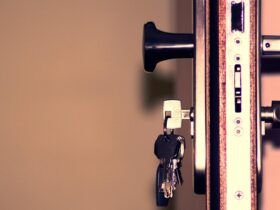Mobility issues can make it tricky to navigate the home, whether old age, accidents, or medical conditions cause them. Luckily, there are plenty of ways to update a home’s accessibility, including support rail installation, furniture rearrangements, and regular clutter cleaning.
Levelling the Floor
Many homes have uneven surfaces, which include small steps to get into rooms; the most common locations are doorways and room transitions. To avoid falling unnecessarily, these areas need to be levelled out. This may sound like an enormous and expensive renovation job, but there are more cost-effective methods. For example, you can have grab rails or ramps installed, which will make for a safer home.
Widen Doorways
If you use mobility aids to get around your home, you may struggle to fit through doorways, especially if you’re living in an old British house. Making your doorways wider will help significantly, but it won’t be the cheapest alternative on this list.
Swap Out Bathroom Hardware
Bathrooms are full of essential hardware like showers and toilets, but they’re not exactly mobility-friendly. For example, a shower with a bath over it will be difficult to climb in and out of. Luckily, there are plenty of disabled bathroom equipment suppliers, which have a catalogue full of mobility-friendly accessories including:
- Detachable shower heads
- Curbless showers
- Walk-in baths
- Mobility-friendly toilets
Clear the Clutter
Some changes you’ll need to make are relatively large, but others just involve adopting good habits. For example, making sure all floors are clear of clutter will prevent you from falling over obstacles. Instead of waiting until the clutter mounds up, and not having the energy or ability to move everything, you should adopt a clean-as-you-go.
Rearrange Furniture
You will likely need to ask for help with rearranging the furniture, but it’s a great way to make your home more accessible. Map out a logical floor plan that leaves enough space to manoeuvre without knocking into objects. As well as this, you should remove any loose rugs, which can pull away from the floor and create trip hazards.
Keep Objects within Reach
While you’re busy rearranging the furniture, spend time organising your storage situation to avoid stretching and bending unnecessarily. This doesn’t only go for high-up items, as you can injure yourself when reaching into the back of lower kitchen cabinets. As a rule, items you use daily need to be at body height. If this means investing in new shelving units and cupboards, then so be it.
Create Plenty of Rest Areas
The majority of people use the living room or bedroom for resting, but fatigue can strike anywhere if you suffer from mobility issues. Therefore, you should consider putting in additional rest points, which can include putting chairs in the corner of additional rooms. Alternatively, you can use a tri-walker with a seat built-in, which means you’ll never need to wait again for that much-needed break.
Navigating a home with mobility issues is challenging, but not impossible with a few simple and reasonable adjustments. The aim of your accessibility project is to create a space that’s clutter-free and easy to walk around.










